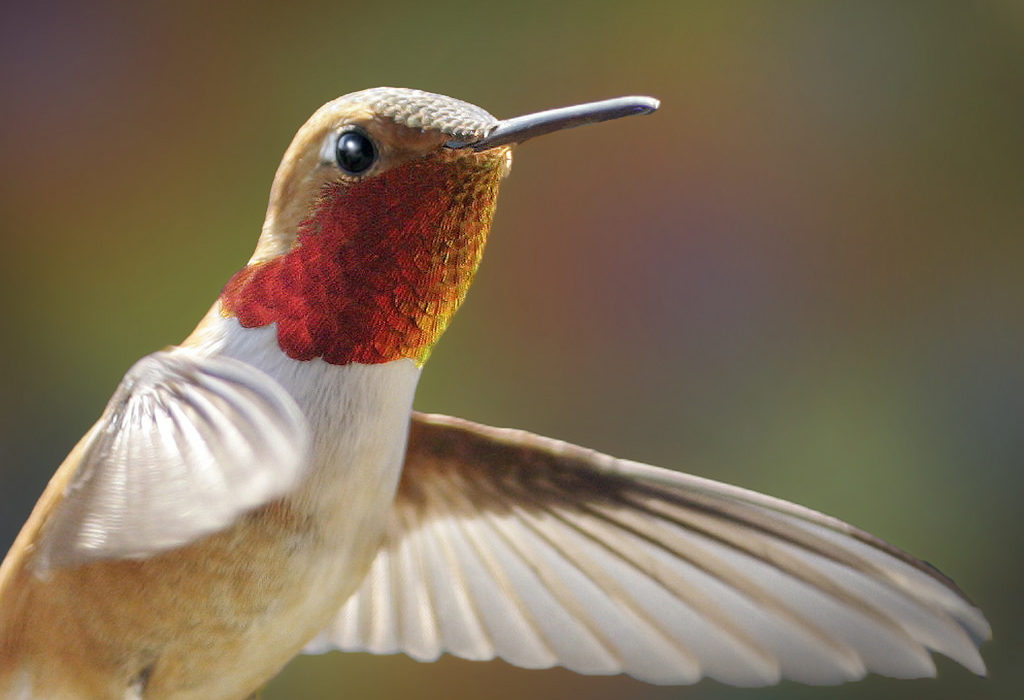
The wings of green are flitting so fast, it’s hard to follow where the bird is. Though it would be hard to believe, hummingbirds are on a feeding frenzy right now. They have to be. Because they are about to embark on a long, long journey.
Summer in the Rocky Mountains is the ideal place for a Broad-tailed Hummingbird or the Rufous Hummingbird. All the bright red, trumpet-shaped flowers provide the ideal food for the hummers. And of course, the bright red feeders that so many home owners hang don’t hurt either.
But winters in Colorado are too harsh for a hummingbird to survive, so they must head south, all the way to Central and South America. Unlike geese, hummingbirds will make this trip along, with their tiny wings beating over and over as they travel over a thousand miles. All that flying burns copious amounts of calories, and so they must eat and eat during the month of September to add fat to their minute bodies.
Hummingbirds will go into hyperphagia during late summer and early fall, continuously lapping up nectar and eating insects full of protein. They will build up a yellow fat that will provide surprising amount of energy during their long flight. Hummingbirds will eat so much that they will almost double their mass during this feeding frenzy.
Because they fly alone, they will use flying techniques to protect them from burning too many calories. Because the winds can be stronger higher up in the sky, the tiny hummers will fly lower, staying just above bodies of water like the Gulf of Mexico. While they fly over land masses, their tiny bodies will stay just above the treetops.
During cooler nights, these delicate birds will sometimes go into torpor, where their body temperature will drop several degrees, their heart rate will slow, and their metabolism drops. Torpor allows the birds to use less energy during winter months when food may be less plentiful. If you see a hummingbird after a cool night, you may think they are dead, because their bodies are so still. But as the day warms up, the hummingbird becomes more active, flying around like a normal bird.
Don’t despair over the disappearance of our feathered friends. With luck, they will return next spring, sipping nectar from our Colorado wildflowers once again.

